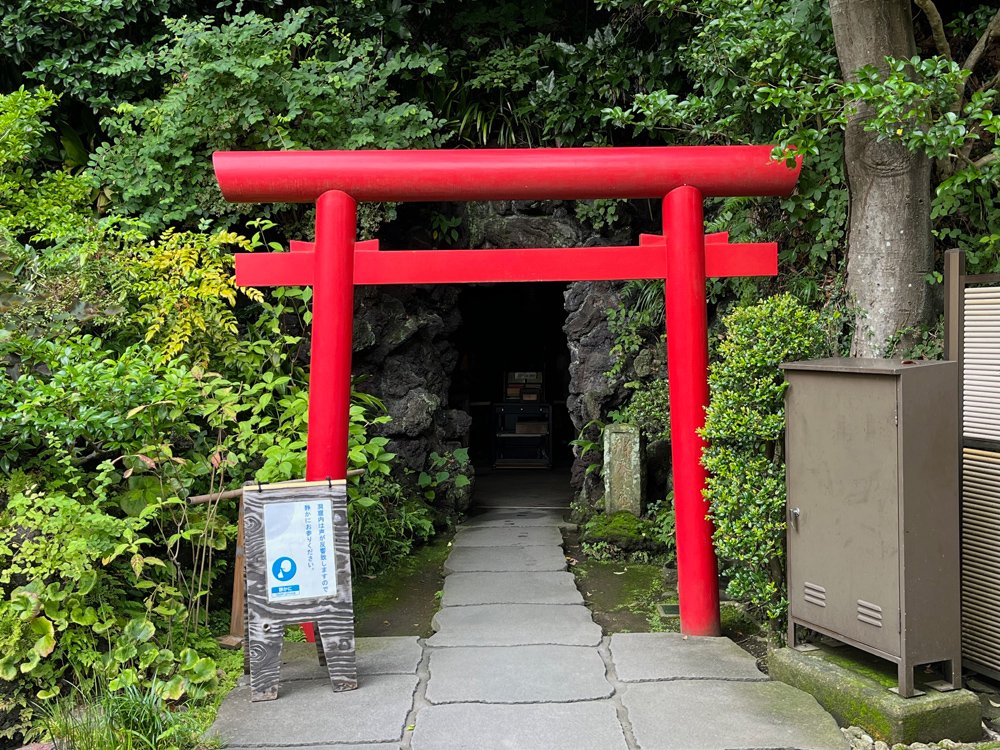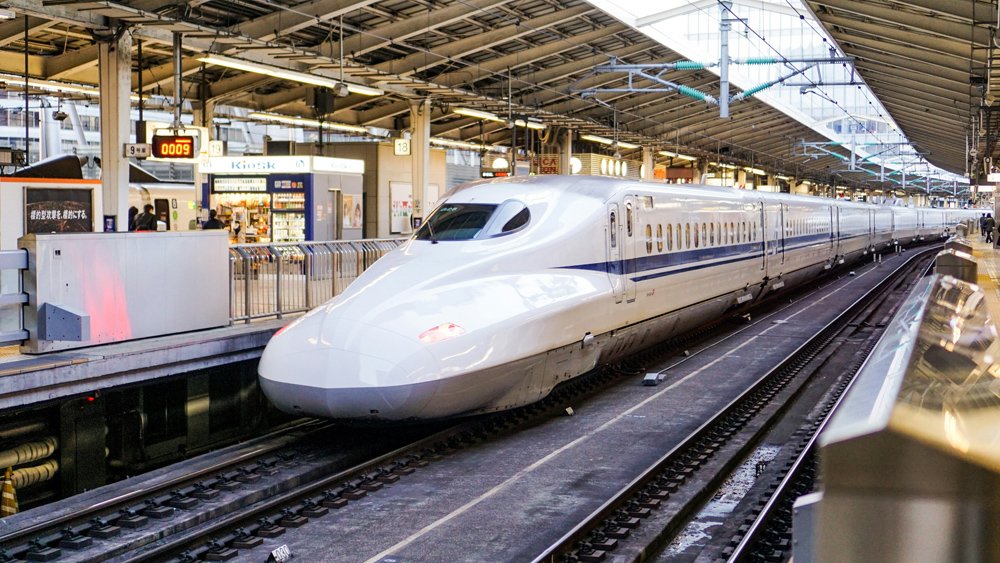It was J’s idea, initially — a holiday in Japan or Singapore…or, her latest suggestion, teaching English to monks in Nepal.
“Nepal sounds awesome, but isn’t next month a bit soon?” I texted back. “So many prerequisites, vaccinations, paperwork… Maybe we park that idea for now and go somewhere else?”
“Where?” she asked.
“What about Japan? You mentioned that a while back?”
And so, we agreed. Japan it was!
Ten Summer Days in Japan (Part 1)
Getting Prepared; Itinerary Organisation
With ten days to explore, we settled on Tokyo, Kyoto, and Osaka, managing to book flights that got us both into Tokyo at roughly the same time (we were leaving from different cities). It was our first time in Japan, so this trip would be a perfect introduction — just enough to experience the country’s energy and maybe even start planning a return visit. We each had a long list of must-see spots, ensuring we’d never be short of things to do.
Though plenty of small group day tours were available, we opted to navigate Japan’s public transport on our own. It was by far the most budget-friendly option and gave us the freedom to explore at our own pace.
I landed mid-afternoon, jumped on the Narita Express from the airport, and had a few hours to myself before J’s arrival. Our hotel, a perfectly located little spot in Shinjuku, was just right for us — compact, convenient, and close to the action.
By day, Shinjuku was surprisingly subdued. But as the sun set, it transformed — neon-lit, buzzing, loud, and exhilarating. And then, towering over the streets, I saw him: Godzilla! Looming high above the crowds, this larger-than-life nod to Japan’s cinematic history was a quirky surprise — an unmistakable welcome to Tokyo.


Discovering Tokyo: Trains, Rain, and Tired Feet!
Getting to grips with the Tokyo Metro
Navigating the Tokyo Metro felt a bit like tackling a tangled bowl of spaghetti — confusing at first but surprisingly logical once you got the hang of it.
Overwhelming? Absolutely. Worth mastering? Without a doubt.
After several trips (with Google Maps as my ever-reliable guide, providing detailed, real-time route, station, and platform info), I was starting to feel like a Metro pro — well, almost! Be warned, though. Tokyo’s stations are vast, many sprawling underground like an entire hidden city beneath the one above. I lost count of how many steps we clocked up, but judging by our aching feet, it was a lot!
Exploring the Tokyo skyline
We had started the day early, heading to the Tokyo Metropolitan Government Building’s observatory for a panoramic view of the city stretching endlessly to the horizon. Although the weather was closing in and the sky thick with clouds, the vastness of Tokyo was still breathtaking. Best of all? It’s free — perfect for budget-conscious travellers like me.
For an even more spectacular view, Tokyo Skytree is the place to go, but sadly we didn’t make it there this time.
Rainy day serenity at Meiji Jingu Shrine

Later, despite pouring rain, we stuck to our plan to visit the serene grounds of Meiji Jingu Shrine. A little water never hurt anyone, and as a bonus, it kept the crowds away! Despite the downpour, the atmosphere was magical — rain dripping through the trees only added to the tranquility, softening the city’s ever-present hum.

We took time to admire the vibrant sake barrels, annual offerings from Japan’s brewers to honour Emperor Meiji and his consort. A quiet, contemplative retreat in the heart of the city, this shrine was the perfect antidote to Tokyo’s exhilarating whirlwind pace.
Tokyo dining: A sizzling experience!
I’m all for budget-friendly meals when travelling — I’d rather splurge on experiences than pricey dinners. I’ve happily eaten instant noodles or a simple salad in my hotel room to save cash. But I do love a good Asian meal, and Tokyo is full of affordable spots serving ramen, udon, curry rice, and tonkatsu — better than anything back home.
One evening, expecting just that, we entered what we thought was a casual eatery. But as our umbrellas and shoes were whisked away and we were ushered into a serene tatami-lined cubicle, my stomach sank — we had stumbled into a high-end Japanese BBQ restaurant.
Panic set in. I considered fleeing but knew that would be terribly rude. Just as I resigned myself to an expensive mistake, J kindly offered to cover the meal, and our understanding waiter suggested a smaller, more budget-friendly portion that we could share.



That bit of tender BBQ wagyu beef with fiery kimchi was exquisite, and I’m eternally grateful for J’s generosity, but guilt overshadowed my enjoyment.
And, of course, we left still feeling hungry!
A Day Trip to Kamakura: Buddha, Temples, and Serenity
Navigating the journey
Our adventure to Kamakura began with navigating the train network from Shinjuku — patience and a sense of humour are prerequisites for train travel in Tokyo, but this journey proved easier than expected.
The journey to Kamakura took about an hour — it was pretty crowded and hot, but offered a chance to watch the ever-changing landscape whizzing past. Two and three-storey houses, arranged higgledy-piggledy alongside the tracks, shopping malls and multi-storey car parks, then open space, forests, farmlets, and more as we approached the coast.
The Great Buddha of Hase

From Kamakura station, there’s a light rail service — the Enoden line — that takes you to various points of interest. The Great Buddha of Hase was our first stop, and it is truly impressive. Standing 11.4 meters tall, this massive bronze statue has stood since the 13th century, serenely overlooking the forested surroundings.

While the sight of this huge statue was awe-inspiring, it was the quiet hum of nature — chirruping insects and rustling leaves, rather than the chatter of too many tourists — that added special charm to the visit.
Hasedera Temple: A forest haven

A short walk back along the road toward the station took us to the Hasedera Temple, a peaceful retreat set amidst a lush forest canopy, bamboo groves, and serene koi ponds. The greenery provided much-needed respite from the searing summer heat, and the temple itself is steeped in history.

According to legend, two Kannon statues were carved from a single tree in 721 AD. One was enshrined here, while the other was set adrift in the sea with a prayer for it to reappear and save people elsewhere.


Especially poignant were the hundreds of Jizo statues around the grounds, placed to honour the souls of miscarried, stillborn, or aborted babies, and children who died before their parents. The Jizo appear to protect these children from devils and evil spirits. It’s a beautiful tribute, underscoring the depth of Japanese spiritual traditions.




While J took in the view from the shade of the forest canopy, I explored the temple’s Benten-kutsu cave — a small shrine blending the co-existence of Buddhism and Shinto in Japan. The caves are a series of low tunnels with carved figures, adding an air of mystery to the visit. Hasedera is a perfect blend of history, nature, and quietude.
Tokyo Contrasts: Imperial Palace and teamLab Planets
After our long day in Kamakura, we had a late start the next day, exploring the Imperial Palace gardens. They’re beautiful, but unfortunately, there’s no real view of the palace itself (which is only open to the public very occasionally).
An earlier start might have been wiser — the heat was intense, and shade was scarce — but at least it wasn’t raining! To escape the heat during our time in Japan, we became regulars at the many Starbucks cafés — perfect for cooling off, resting our weary feet, and elevating my cholesterol with too many glasses of long, cool Matcha Frappuccino!
Later, we crossed Tokyo (three train changes) to visit teamLab Planets. Luckily, we’d secured tickets for late on our final afternoon — booking at least two weeks ahead is generally a must. This ultra-modern art space immerses you in a sensory world: wading knee-deep through water brimming with digital koi, interacting with floating, glowing spheres, and stepping into a planetarium-like dreamscape of flowers. Mesmerizing and unforgettable. If you’re in Tokyo, don’t miss it!




Tokyo Life: A Fusion of Ancient and Modern
Tokyo is a city where contrasts coexist in perfect harmony, creating a unique blend of past and present. In one moment, you can immerse yourself in ancient traditions — visiting a serene temple, participating in a meticulous tea ceremony, or observing the elegance of geisha culture. In the next, you’re surrounded by cutting-edge technology, from dazzling neon lights, to the seamless efficiency of the transport network, or walking hand-in-hand with robots (check out Pepper the robot serving customers in stores).
One of Tokyo’s most striking features is its ability to preserve historical landmarks like the Meiji Jingu Shrine or the grounds of the Imperial Palace amidst the bustling metropolis. These provide a stark contrast to the vibrant, modern energy of neighbourhoods like Shinjuku or the craziness of the famous Shibuya Scramble Crossing. This fusion of old and new makes Tokyo a place of endless discovery, where every corner offers something unexpected and exciting.
People and Patience
One thing your need to get used to in Tokyo is the crowds — there are a LOT of people! Having spent time in various parts of Asia, I don’t find them too intimidating, but it’s always refreshing to escape the masses when you can. Fortunately, there are plenty of accessible areas where you can do just that.
Getting around on public transport takes time. Tokyo’s train stations are vast, interconnected underground networks, complete with shopping malls and restaurants — a city beneath a city — and mastering the labyrinths is an experience. Finding the right platform or exit can be a challenge, and you’ll end up walking a long way most days.

Since I’d taken charge of navigation, I was grateful for J’s patience when I took wrong turns or spent ages staring at station signage and Google Maps, trying to work out our next move. I never got us completely lost — just a few detours here and there. She teased me, and we laughed, though I’m sure there were some gritted teeth moments, too!
Our short stay in Tokyo was the perfect introduction to this fascinating city. We mostly stuck to doing touristy things, but it left me eager to return.
But Tokyo was just the beginning. Kyoto and Osaka awaited. The next morning, we boarded the Shinkansen for the smooth, 2 ½ hour ride to Kyoto.

Click here to continue reading about this Asian adventure with Part 2 of “Ten Summer Days in Japan”.
Leave a Reply